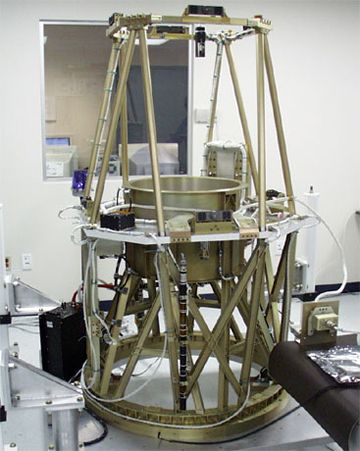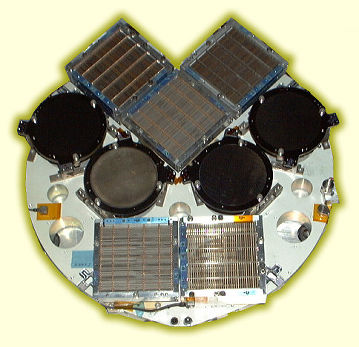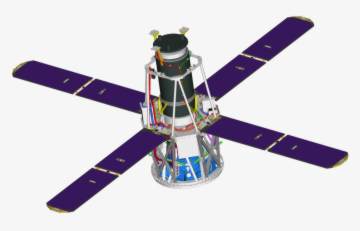|
|
|
Other RHESSI |
|
|
|
|
|
|
|
|
|
|
|
|
 |
The HESSI
|
|
The SpacecraftThe Spacecraft Bus consists of the structure and mechanisms, the power system (including the battery, solar panels, and control electronics), the attitude control system, thermal control, command and data handling (C&DH), and telecommunications. The spacecraft structure shown here provides support for the telescope and other components. It was manufactured out of aluminum parts to be light weight but strong. The equipment platform has a honeycomb structure to further reduce the weight. The Spacecraft was manufactured in Gilbert, Arizona by Spectrum Astro, Inc. |
 |
|
 |
Imaging Telescope AssemblyThe Imaging Telescope Assembly consists of the telescope tube, grid trays, Solar Aspect System (SAS), and Roll Angle System (RAS). It was constructed, assembled, aligned, and tested at the Paul Scherrer Institut in Switzerland. The front and rear grid trays are attached to the telescope tube (shown here). It maintains the separation and alignment of the trays. |
|
 |
||
Grid Tray & GridsNine grids are mounted on a grid tray at each end of the telescope tube. The grid pairs modulate the transmission of solar flare x-ray and gamma-ray emissions through to the detectors as the spacecraft spins around the axis of the telescope tube. The modulated count rates in the nine detectors are used in computers on the ground to construct images of solar flares in different energy bands. The five coarse grids (square) were constructed by Van Beek Consultancy in The Netherlands. The four fine grids (round) were constructed by Thermo Electron Tecomet in Massachusetts. All grids were characterized both optically and with X-rays at Goddard before being shipped to the Paul Sherrer Institut for integration into the imaging telescope assembly. |
||
SpectrometerThe spectrometer contains nine
germanium |
||
 |
||
AttenuatorsThe attenuator disks are visible on top of the spectrometer in this picture. They can be moved in front of the germanium detectors during intense solar flares. In this position, they attenuate the flux of solar flare X-rays that reach the detectors and hence prevent saturation effects that occur at high count rates. When not in place, HESSI is much more sensitive to softer X-rays and weaker flares can be detected. The attenuators were fabricated by Tecomet, characterized at Goddard and assembled, tested and integrated with the spectrometer at Berkeley. |
 |
|
 |
Computer Aided DesignThe image on the left shows a computer aided design (CAD) drawing of the HESSI spacecraft. The aluminum frame is shown in gray, the telescope tube is black, the spectrometer assembly is blue, and the solar panels are purple. The three projections at the top of the telescope tube are two communications antennas and the Fine Sun Sensor. |
|
|
|
||

